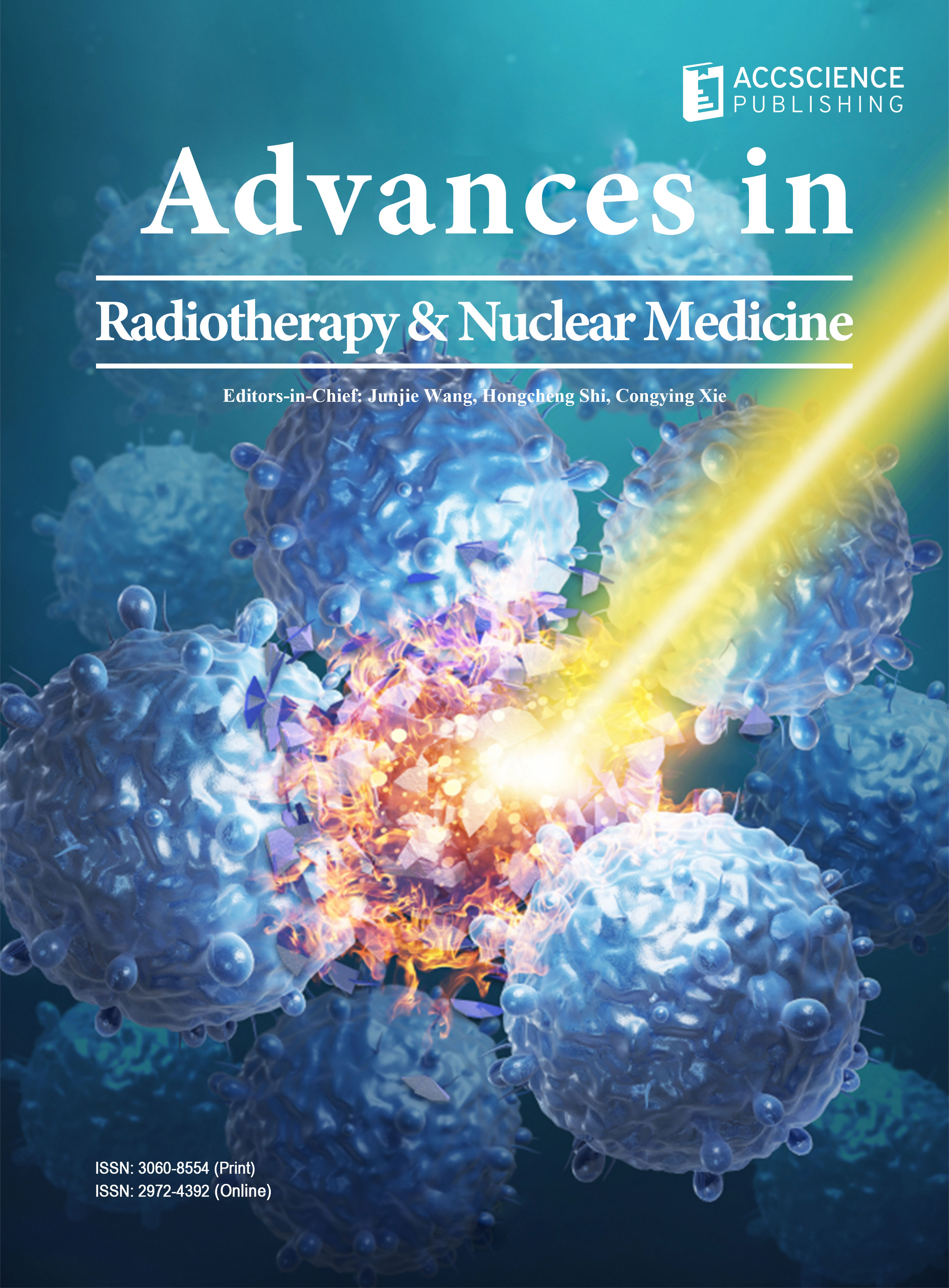Unveiling the relationship between the SUVmax of 18F-FDG PET/CT and patient and tumor characteristics

18F-fluoro-2-deoxyglucose (FDG)-based positron emission tomography (PET)/computed tomography (CT) is an indispensable tool in modern oncology, extensively used for diagnosing and staging various cancers. The maximum standardized uptake value (SUVmax) of FDG helps identify the most metabolically active areas of disease. In this analytical cross-sectional study performed between January and December 2019, we compared SUVmax for different cancer types and determined the effect of demographic, pathological, and clinical variables on SUVmax. The study included 117 newly diagnosed cancer patients who underwent FDG PET/CT before treatment. Data on descriptive variables, including age, gender, stage, histopathological diagnosis, and tumor differentiation grade, were collected for each patient. Correlation analysis of these variables with SUVmax in FDG PET/CT was performed using Spearmen’s test and a forward stepwise regression model. A total of 117 patients (63 males and 54 females) with a median age of 61 years (range: 21 – 90) were included in this study. Histopathological diagnoses revealed squamous cell carcinoma (n = 71%), adenocarcinoma (n = 24%), and small cell cancer (n = 5%). The SUVmax of the primary tumor was positively correlated with histology (P < 0.05), with the highest SUVmax observed in squamous cell carcinomas. In conclusion, SUVmax was positively correlated with histology, while no association was detected with the patient’s age and gender, as well as the stage, organ, site, or grade of the tumors. However, we recommend a larger and more homogenous study sample to further investigate any clinically relevant relationship between the SUVmax and various disease factors in diverse patient populations.
- Budak E, Çok G, Akgün A, 2018, The contribution of fluorine 18F FDG PET/CT to lung cancer diagnosis, staging and treatment planning. Mol Imaging Radionucl Ther, 27: 73–80. https://doi.org/10.4274/mirt.53315
- Hu Y, Wu D, Tian C, et al., 2018, Diagnosis of multiple primary intestinal type adenocarcinoma in the lung by 18F FDG PET/CT. Clin Nucl Med, 43: 693–694. https://doi.org/10.1097/RLU.0000000000002171
- Goense L, Ruurda JP, Carter BW, et al., 2018, Prediction and diagnosis of interval metastasis after neoadjuvant chemoradiotherapy for oesophageal cancer using 18F FDG PET/CT. Eur J Nucl Med Mol Imaging, 45: 1742–17451. https://doi.org/10.1007/s00259-018-4011-6
- Farwell MD, Pryma DA, Mankoff DA, 2014, PET/ CT imaging in cancer: Current applications and future directions. Cancer, 120: 3433–3445. https://doi.org/10.1002/cncr.28860
- Annunziata S, Cuccaro A, Tisi MC, et al., 2018, FDG PET/CT at the end of immuno chemotherapy in follicular lymphoma: The prognostic role of the ratio between target lesion and liver SUVmax (rPET). Ann Nucl Med, 32: 372–377. https://doi.org/10.1007/s12149-018-1243-2
- Verhagen AF, Bootsma GP, Tjan-Heijnen VC, et al., 2004, FDG-PET in staging lung cancer: How does it change the algorithm? Lung Cancer, 44: 175–181. https://doi.org/10.1016/j.lungcan.2003.11.007
- Erdi YE, Macapinlac H, Rosenzweig KE, et al., 2000, Use of PET to monitor the response of lung cancer to radiation treatment. Eur J Nucl Med, 27: 861–866. https://doi.org/10.1007/s002590000258
- Zheng D, Niu L, Liu W, et al., 2019, Relationship between the maximum standardized uptake value of fluoro-2- deoxyglucose-positron emission tomography/computed tomography and clinicopathological characteristics in tongue squamous cell carcinoma. J Can Res Ther, 15: 842–848. https://doi.org/10.4103/jcrt.JCRT_855_18
- Sunnetcioglu A, Arısoy A, Demir Y, et al., 2015, Associations between the standardized uptake value of (18)F-FDG PET/ CT and demographic, clinical, pathological, radiological factors in lung cancer. Int J Clin Exp Med, 8: 15794–15800.
- Liu S, Feng Z, Wen H, et al., 2018, 18FFDG PET/CT can predict chemosensitivity and proliferation of epithelial ovarian cancer via SUVmax value. Jpn J Radiol, 36: 544–550. https://doi.org/10.1007/s11604-018-0755-y
- Shijun Z, Ning W, Rong Z, et al., 2013, Relationship between SUVmax of 18FDG PET and clinicopathological features of nonsmall cell lung cancer. Chin J Oncol, 35: 754–757.
- Nakamura K, Kodama J, Okumura Y, et al., 2010, The SUVmax of 18FFDG PET correlates with histological grade in endometrial cancer. Int J Gynecol Cancer, 20: 110–115. https://doi.org/10.1111/IGC.0b013e3181c3a288
- Kitajima K, Kita M, Suzuki K, et al., 2012, Prognostic significance of SUVmax (maximum standardized uptake value) measured by [18F] FDG PET/CT in endometrial cancer. Eur J Nucl Med Mol Imaging, 39: 840–845. https://doi.org/10.1007/s00259-011-2057-9
- Dylan J, Hazem A, David G, et al., 2013, Histological grade/ differentiation and 18FFDG PET/CT in oesophageal cancer. Gastroenterol, 144: S515–S519.
- Chen Q, Xue Zhen M, 2009, Relationship between uptake values of 18FFDG PET/CT standard and NSCLC clinicopathological factors. J Qilu Med, 24: 104–105.
- Sasaki R, Komaki R, Macapinlac H, et al., 2005, [18F] fluorodeoxyglucose uptake by positron emission tomography predicts outcome of non-small-cell lung cancer. J Clin Oncol, 23: 1136–1143. https://doi.org/10.1200/JCO.2005.06.129
- Downey RJ, Akhurst T, Gonen M, et al., 2007, Fluorine-18 fluorodeoxyglucose positron emission tomographic maximal standardized uptake value predicts survival independent of clinical but not pathologic TNM staging of resected non-small cell lung cancer. J Thorac Cardiovasc Surg, 133: 1419–1127. https://doi.org/0.1016/j.jtcvs.2007.01.041
- Kwon W, Howard BA, Herndon JE, et al., 2015, FDG uptake on positron emission tomography correlates with survival and time to recurrence in patients with stage I non-small-cell lung cancer. J Thorac Oncol, 10: 897–902. https://doi.org/10.1097/JTO.0000000000000534
- Agarwal M, Brahmanday G, Bajaj SK, et al., 2010, Revisiting the prognostic value of preoperative 18F-fluoro-2- deoxyglucose (18F-FDG) positron emission tomography (PET) in early-stage (I and II) non-small cell lung cancers (NSCLC). Eur J Nucl Med Mol Imaging, 37: 691–698. https://doi.org/10.1007/s00259-009-1291-x
- Hoang JK, Hoagland LF, Coleman RE, et al., 2008, Prognostic value of fluorine-18 fluorodeoxyglucose positron emission tomography imaging in patients with advanced-stage non-small-cell lung carcinoma. J Clin Oncol, 26: 1459–1464. https://doi.org/10.1200/JCO.2007.14.3628

